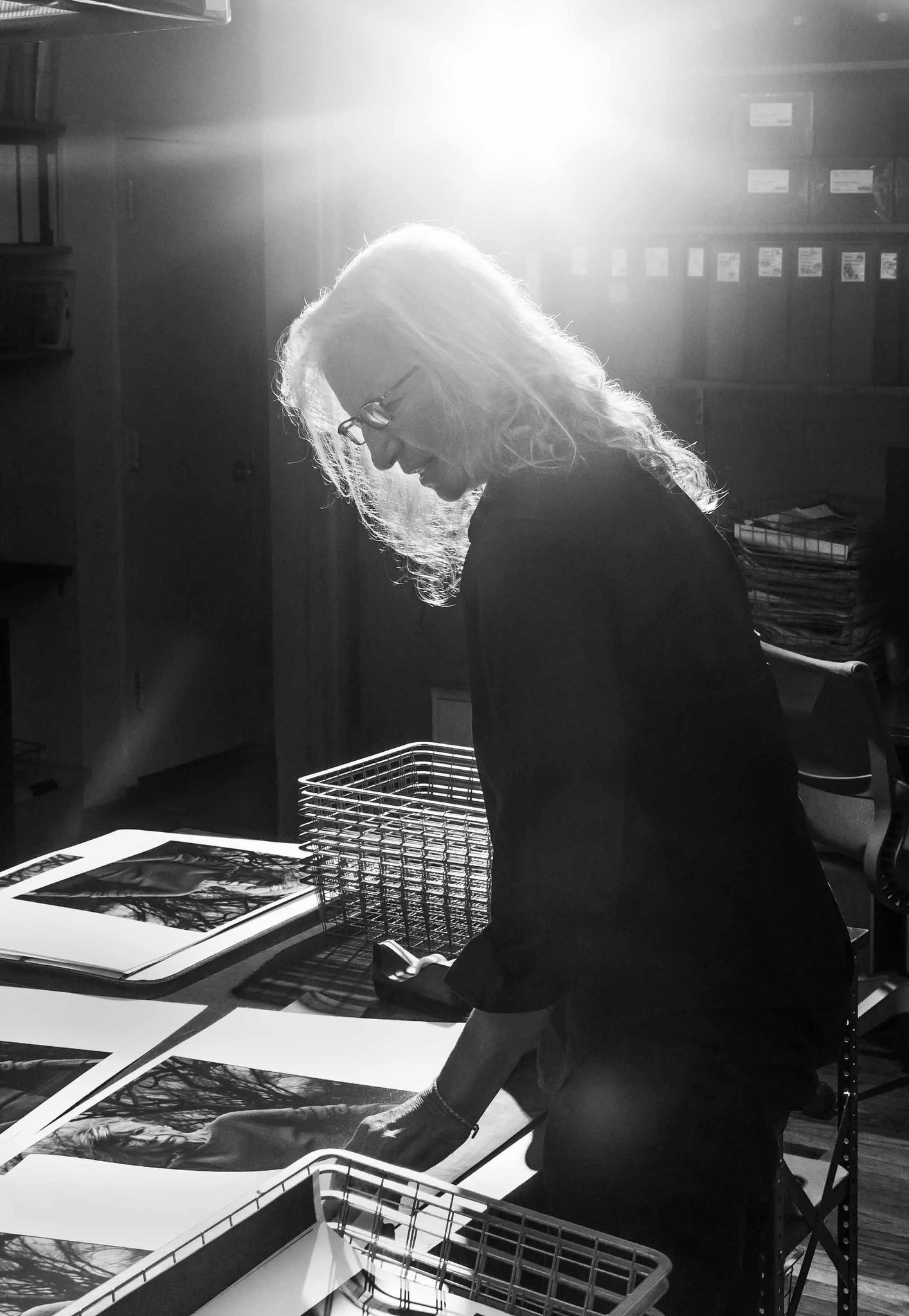The photographer returns to her most personal project with new
subjects, a new touring exhibition and a new mentor: Gloria Steinem.
On a recent morning at her photography studio in Chelsea, Annie Leibovitz was affectionately discussing with her longtime friend Gloria Steinem a photo shoot they did together.
The statuesque Ms. Leibovitz, her long white hair flowing down her black button-down shirt, recalled pointing to Ms. Steinem’s messy desk in the corner of her home last year and saying, “That’s your cockpit.”
“I think it’s important for a young student or writer to see you at work,” Ms. Leibovitz had told her.
In the finished portrait, now tacked to the wall, Ms. Steinem, the 82-year-old political activist and women’s advocate, is captured lost in thought — or concern — at her computer, surrounded by books and paper, and bathed in the glow of her desk lamp. “It is, of course, the place that means the most to me,” Ms. Steinem said, “because it’s where I write — and where I’m unable to write.”
Continue reading the main story
The intimate picture of Ms. Steinem was the first of dozens of new images of female leaders — in politics, sports, business and culture — that Ms. Leibovitz, 67, began taking last year to update her 1999 project “Women,” a book collaboration with her partner of 15 years, Susan Sontag, who died in 2004. “It really resonated,” Ms. Leibovitz said, but “the project was never done.”
Seventeen years down the line, with “Women: New Portraits,” she is adding to history, with a new mentor, Ms. Steinem; a new generation of viewers to reach; and a new format beyond the printed page. Since January, Ms. Leibovitz has been on a 10-city international tour, appearing not in museums or shopping malls but in historically rich “pop-up” sites where the audience is invited to join her in “talking circles,” led by Ms. Steinem. They have focused on issues that range from sexual violence against women in Mexico City to women’s experiences in the technology world in San Francisco.
“Talking in groups like that, it brings me to tears that we can do this sort of work within the show,” said Ms. Leibovitz, who added that the new work is more “democratic” — more personal, more satisfying, more concerned with what someone does (like Andréa Medina Rosas, a human rights lawyer working with women on the United States-Mexico border) rather than how they look.
To learn more about the cities and exhibit dates, click here.
Read on for the balance of the article and accompanying photos….



